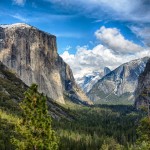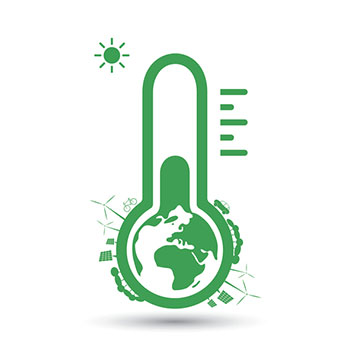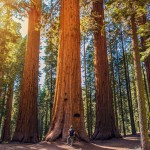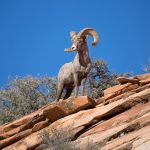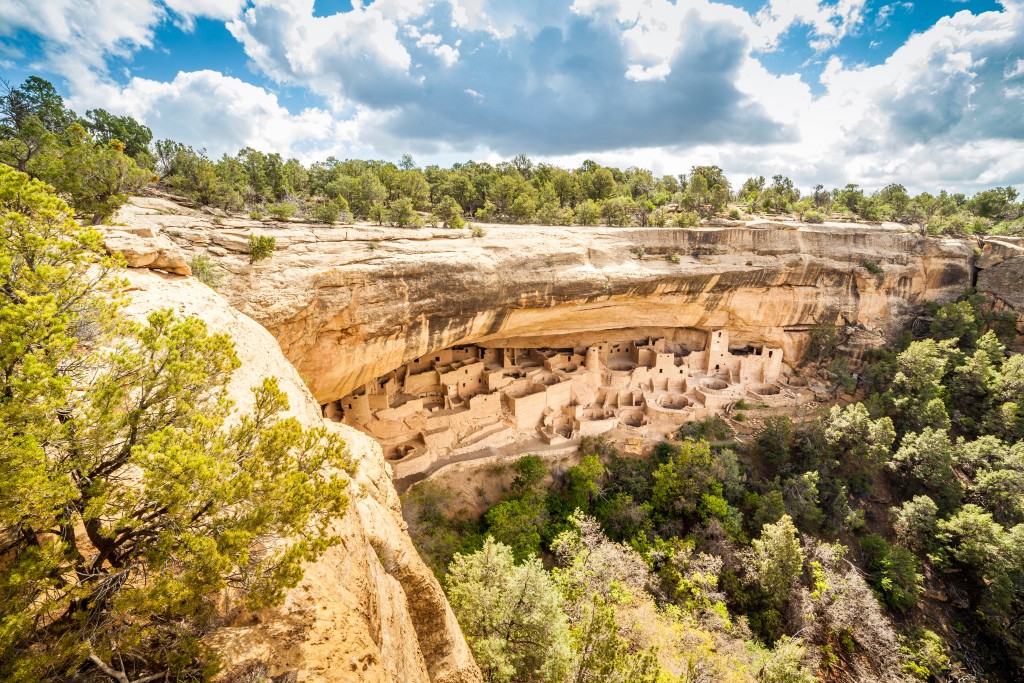Crater Lake National Park - A Place of Immeasurable Beauty
Crater Lake National Park was signed into law as the first National Park of the 20th century. The unusual morphology of the crater had inspired interest in the late 19th century following its discovery and attempts to measure its depth began towards the end of the century. It is Oregon’s only National Park, a known collapsed stratovolcano (similar to Yellowstone) which eventually filled with water to form one of America’s most iconic, natural volcanic monuments.
It is the deepest lake in the US, but by no means the deepest in the world being around one third the depth of Baikal in Siberia (1). Crater Lake itself is one of many volcanoes or extinct volcanoes within the Cascade Range. There are several geologic and natural features that the National Park was founded to protect – not least of all The Pumice Desert – a large field of pumice stones to the north. Plants rarely grow there thanks to the porous nature of the rock, the poor quality of the soil and the lack of nutrients entering it because of the lack of plant life (2). Nevertheless, it is a popular site for tourists to visit and of strong interest to geologists and volcanologists.
The lake dominates the landscape, but there are several other mountains and hills that make up the National Park. The geology is of special interest for many reasons – there are no streams leading out of the lake and most water is lost through evaporation. The source of the water has been identified as subduction from the Pacific – fluid making its way into the lake by slipping under and through tectonic plates (3); there are no rivers leading into the lake either but the park covers other rivers that are not connected with it.
The History of Crater Lake
Evidence suggests that the caldera formed around 400,000 years ago and collapsed just 7,700 years ago (4). Native American Tribes claim that their ancestors witnessed the event and kept the story passing through folklore and oral traditions ever since – an important and undervalued source. Most of the archaeological evidence of its Native American history suggests it was never a place of permanent settlement, but seasonal and possibly a holy or ritual site for most of its human antiquity (5). Following the collapse, melting ice and water came up through the tectonic plates to eventually fill the caldera (4). The result today is that Crater Lake is one of the clearest blue lakes anywhere in the world.
The Klamath (modern descendants of the historic Makalak tribe) people were so keen not to reveal the location or information about the site for most of the early history of the US. It is highly sacred to most Native people of Oregon and northern California. In June 1853, a small group of pioneers were looking for a fabled source of gold and stumbled upon the clear blue waters of Crater Lake, commenting how clear and blue its waters were (5).
The US Geological Survey attempted to measure the lake’s depth in 1886, calculating that it was 1996ft deep (1). Recalculating the depth in the early 21st century revealed that the calculation was off, but only by a small amount.
The 1860s saw a number of explorations of Crater Lake and even argument over what it should even be called –including Lake Majesty and Deep Blue Lake. Finally, Crater Lake was chosen after a team of journalists visited the cone island at the centre (1). Much of the campaign to have it declared a National Park came from a single person – William Gladstone Steel. It captured his imagination as a young boy in 1870 and he vowed to visit it as soon as he was able; that vow would take 15 years to be realized. He was part of the 1886 measuring team, helped to map Crater Lake and began a campaign to protect it – he met with much opposition, particularly from industrialists and miners and sheepherders, but finally had his proposal accepted in the early 20th century (5).
The Flora of Crater Lake National Park
Though the land to the north of Crater Lake is generally barren, the same cannot be said of the rest of the park. The makeup of the plant life is fairly typical of what we see across the southern Cascade Mountains; the mix of volcanic upland, bogs and wetland and low rise mountain ranges means we see a wealth of plant life here (6).
One of the most fascinating plants is the abundant mosses that have been a feature of the lake for several thousand years. Great strides have been made in understanding these mosses and for wider implication of moss species in general the last few decades (7), particularly from analyses of ancient sediments and beds. The moss is particularly fascinating because of the lack of native animals living in the lake (because of the nature of how it formed and the lack of rivers in and out of the lake) – with one or two exceptions, but we will cover that in the next section.
Most of the woodland to the south is made up of coniferous forest – over a dozen species make up the old growth forests. There are few broad leaf species here, mostly because the ground is high up (8) and what there is are often small and shrubby. The most common tree types are Western Yellow Pine and Douglas Fir which are particularly common in the higher elevations.
The Park is also home to a number of native flowers; botanists consider Crater Lake and the surrounding areas to be a very important field research centre. Books have been published on the rare native wildflowers – and there are considered to be around 100 important species in the meadows of the mountainous regions (9).
Conservation Issues
The delicate nature of the flora of Crater Lake National Park means that the National Park Service has a number of ongoing concerns with plant pests and invasive species which could prove problematic if not correctly monitored and managed (10). Of particular concern at Crater Lake National Park is with campers. It is a popular camping area and many people bring in firewood from outside and are unaware of the problem of introducing seeds and moss of non-native species and the potential problems they may have on native species, especially those that are protected.
Invasive plants are the top concern for the National Park Service at present (11, p49). A report published in 2013 demonstrated that there are a low number of invasive species at Crater Lake National Park, but that this small number is of a particularly large threat – more so than initially thought. Scotch Broom and Yellowstar Thistle are the most abundant and the biggest threat (11, p50-51).
Scotch Broom (12) and Yellowstar Thistle (13) are both common native European species and a vital part of most of Europe’s temperate ecosystems –Scotch Broom is also native to North Africa, and Yellowstar Thistle is also native to western Asia and Eastern Europe. These weeds are not cause for concern on the other side of the Atlantic. However, they are North America’s most common invasive species, presenting problems across the continent; both are aggressive and the National Park Service in general struggles to keep it under control where it is invasive or has colonized; both are considered capable of changing the composition of the ecosystem wherever they take a foothold (11, p50-51).
Blister Rust Fungus is a pathogen present in the park; non-native, it has now become endemic to the whitebark pines in the park (around three or four different species). The health of the whitebark in relation to Blister Rust Fungus is considered a measure by which all other plants in the park are monitored (14). This is because it spreads using other shrubs as hosts before infecting the whitebark pines. Several management strategies have been proposed including either removing some of the shrubs that host the fungus or to increase the population of rodents that feed on them. Monitoring of the fungus is ongoing.
The Fauna of Crater Lake National Park
Timber felling has been common in the past but because of the delicate ecosystem and laws to protect the landscape and the wildlife. The landscape varies over a relatively small area and the park is dominated (naturally) by Crater Lake. This means that there are abundant vertebrates and invertebrates representing native wetland, upland, mountain, woodland and meadow. The only area of the park where there is hardly any wildlife is the north where the poor quality soil and lack of plant life – The Pumice Desert – makes it very difficult for any population to take hold (15).
Snow settles in the winter thanks to the cold air coming off the North Pacific and it can be surprising to see how many native animals thrive there despite being best-known for occupying more temperate and warmer areas, particularly the native amphibian species. This makes the Park particularly delicate and vulnerable to temperature change and freak weather – any change to snow cover could potentially have knock on effects for life in the park. It is home to Pacific Tree Frogs, several types of salamander, several newts and toads and species of bat.
Of particular note for Crater Lake itself is that there are no native fish species – this is due to the nature of the formation of the lake. All fish found there are all deliberately introduced species (16); there were six originally but just two survive. Those that survive are carefully managed by the National Park Service and populations are largely in equilibrium with one exception (discussed below – a species native to Oregon but not to the park).
Fauna Conservation Concerns
As mentioned above, the popularity of bringing in cheaper firewood of non-native species may save campers money, but there are potential problems to wildlife in the park. As well as seeds and mosses of weeds and aggressive non-native plants having been let loose on the park, there are also concerns that insect eggs may also break into the wild, putting native insects at risk (10). Like other managers of our National Parks, campers are advised to “burn it where they buy it”.
Crater Lake National Park is one of the areas of the western North America that has come to rely on fires to keep the vegetation canopy young and vibrant; brush fires are identified as important natural processes for promoting new life. Change in frequency affects both plants and animals (11, p75). A reduction in fire frequency and prolonged effects of climate change will lead to the reduction of meadow and the increase of conifer forest. Though this will be good for woodland species, it will not be good for those species that rely on grassland, particularly several threatened species in the higher levels. A warming climate will potentially lead to the extinction within the park of several species of threatened birds especially (11, p77).
The biggest area of animal conservation in Crater lake National Park is that concerned with the protection of Bull Trout at Sun Creek and Lost Creek (18). The species is protected from fishing as the species is under threat within the park (11, p39) but at Crater Lake itself, people are free to fish the two surviving non-native species without permit or license. The problem for the Bull Trout and other protected species has become such a major concern that people driving to the park towing leisure boats are now subject to have their water vehicles examined in case they carry the seeds or eggs or other aquatic species that may threaten the ecology of the waterways (17). Anybody looking to take boats into Oregon are required to stop at one of many designated checking stations in the state.
Ongoing Conservation Challenges
There are three major causes of concern at Crater Lake National Park. The first is human action – mostly passive – that introduces problematic invasive species. It was necessary for Oregon to introduce laws to ensure that anybody bringing a boat into the state for the purpose of leisure use on its waterways (not just Crater Lake National Park) be systematically examined to ensure they are clean of anything that could transplant plant and animal species into the park. The second issue to come under this banner is burning of wood within the park from trees that are not native. The very real threat of weed seeds and insect eggs from untreated wood has the potential to upset the delicate ecology and there is no such equivalent law (or, arguably, a way to monitor this). The best we can do on this issue is education – to make people aware of the potential threats the park faces.
The second is the ongoing threat of climate change. We know the extensive problems this is already causing in the developed world, we know how it is already affecting the ecology of preserved and protected landscapes such as our National Parks, and we can predict some of the biggest changes that may come if we cannot stem the temperate rise. Within Crater Lake National Park, it has been calculated that acres of important meadow will be lost – including threatened plants and animal species that currently call them home. Though it is also predicted that conifer forest will spread, there are drawbacks to this too – it’s not clear cut to say it will be good for native trees.
The third is the change to natural processes, though some of these may be affected by anthropogenic climate change. Due to the area around Crater Lake National Park having a lot of snow, any reduction in snow cover annually could affect some of the waterways (though not Crater Lake itself). Precipitation relies on melt water, as do the rivers not connected to the park’s major feature. Also being monitored are the number and extent of brushfires which have reduced in recent years, strangling the possibility of new growth. Controlled fires are options in other areas when natural burning fails to take place.
Sources
(1) http://www.nps.gov/crla/planyourvisit/upload/2010-deepest-lakes-sb.pdf
(2) http://epod.usra.edu/blog/2013/08/oregons-pumice-desert.html
(3) http://www.livescience.com/43220-subduction-zone-definition.html
(4) http://www.nps.gov/crla/planyourvisit/upload/2010-history.pdf
(5) http://www.craterlakeinstitute.com/general-natural-history-articles/plants/
(6) http://www.nps.gov/crla/learn/nature/the-aquatic-moss-of-crater-lake.htm
(7) http://www.craterlakeinstitute.com/general-natural-history-articles/general-natural-history-articles-index/forests-of-crater-lake-1916/
(8) http://blogs.oregonstate.edu/breakingwaves/2012/07/20/new-app-helps-campers-find-local-firewood-avoid-spreading-invasives/
(9) http://www.invasivespeciesinfo.gov/plants/scotchbroom.shtml
(10) http://www.invasivespeciesinfo.gov/plants/yellowstar.shtml
(11) https://www.apsnet.org/edcenter/disandpath/fungalbasidio/pdlessons/Pages/WhitePine.aspx
(12) http://www.craterlakeinstitute.com/general-natural-history-articles/animals/
(13) http://www.nps.gov/crla/planyourvisit/upload/2010-fishing-sb.pdf
(14) http://www.dfw.state.or.us/news/2012/June/060412b.asp
(15) http://www.nps.gov/crla/learn/nature/bulltrout1.htm







